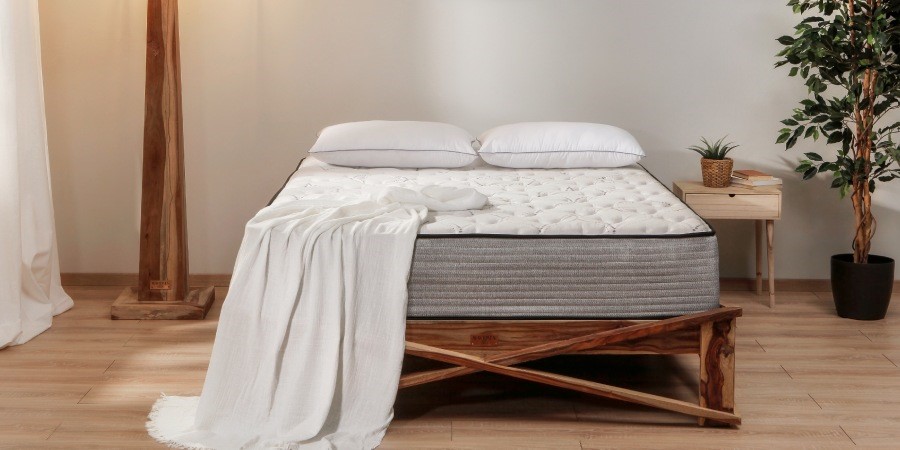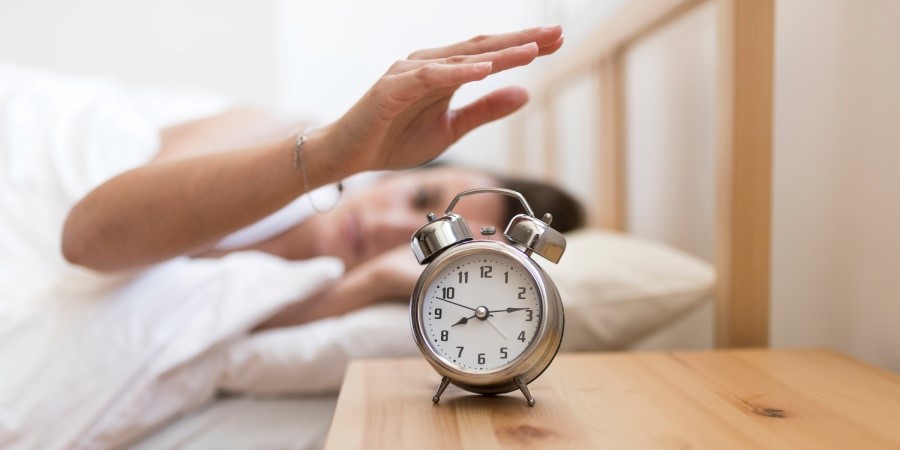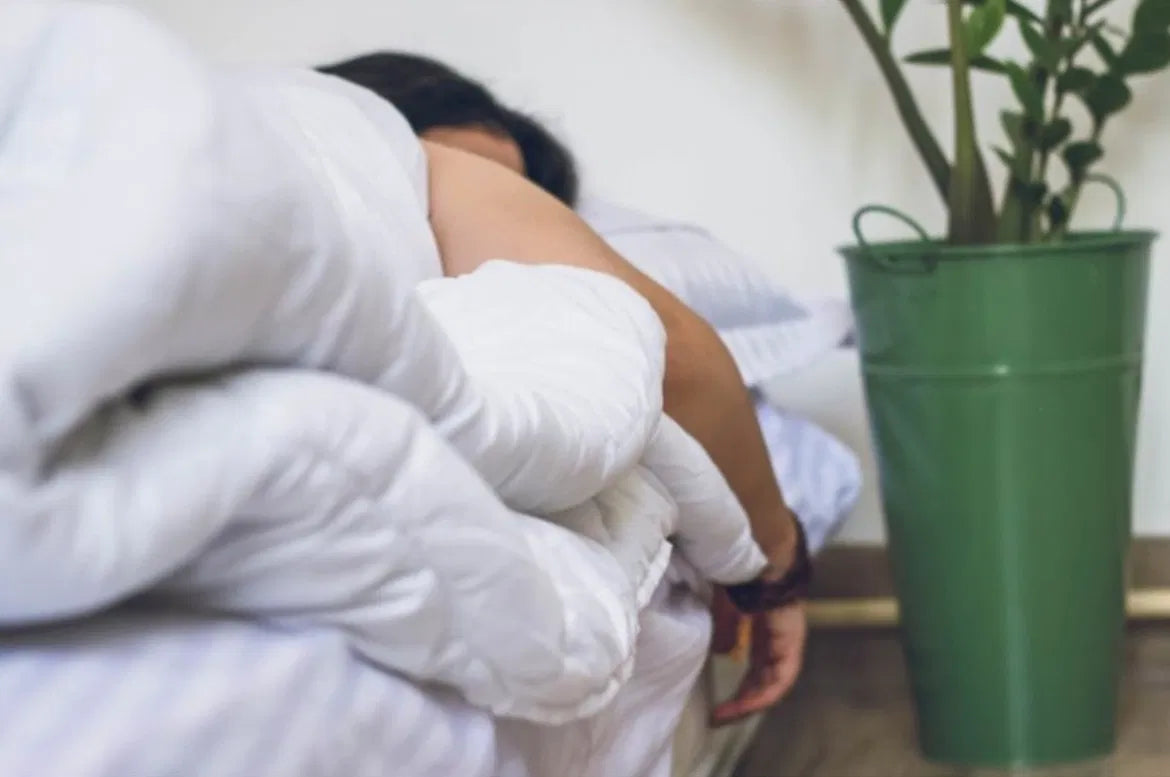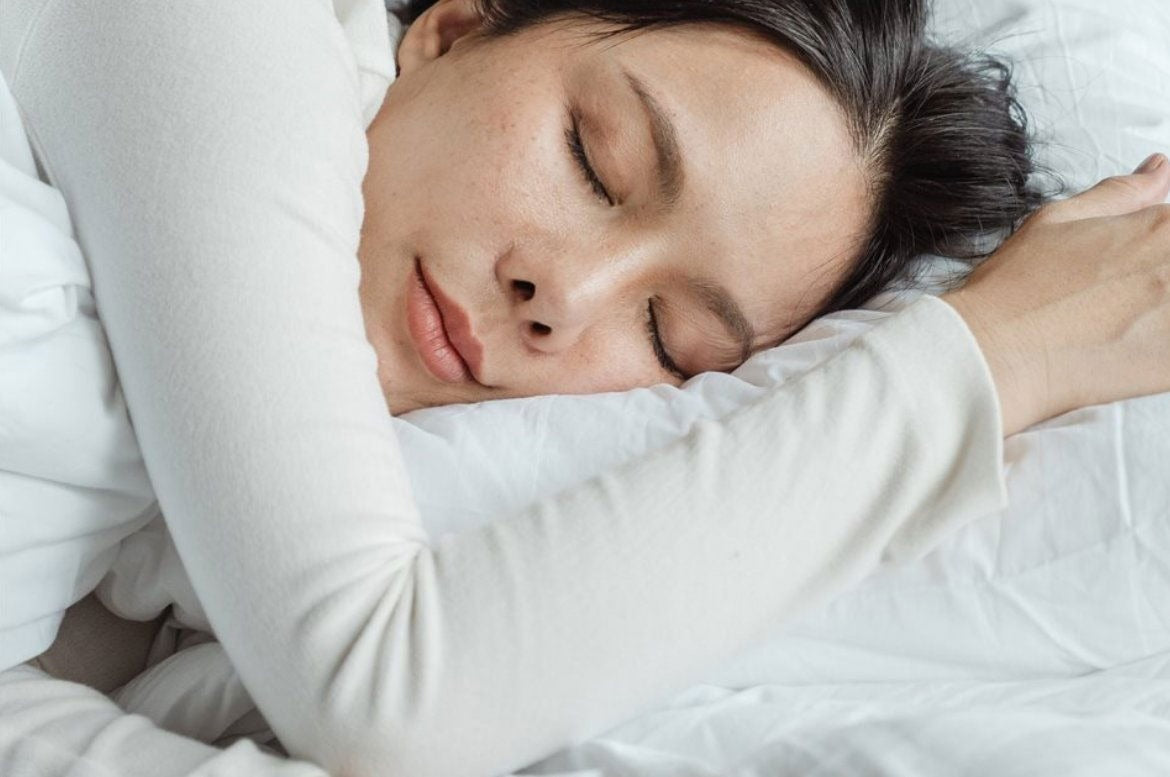Think about this.
- Despite your very busy schedule, you still have enough time to relax before bed.
- Your bedroom is at the right temperature, free of noise, and dark enough so that you can fall asleep and stay asleep without any problems.
- The next morning, you manage to wake up before the alarm and feel rested and full of energy.
If this sounds like a scenario you can only dream of, you're not alone. We've rounded up the 17 best tips for creating the ideal sleep environment to improve your sleep quality so you can (finally) get a good night's sleep.
Create the ideal sleep environment
1. Tidy up your room
Keeping your bedroom tidy and free of distractions is essential for your body to start relaxing. Work papers or a laptop, noisy whiteboards, or even a treadmill are all reminders of your responsibilities that subconsciously cause stress and can distract you while you’re trying to fall asleep. Instead, try to keep your room tidy and the decor fairly simple.
2. Reduce the brightness
For an ideal sleep environment, try blackout shades, heavy curtains, or a sleep mask to reduce as much natural light as possible. Light can trick your brain into thinking it’s daytime. Tip: Set an alarm or set your smartphone or smartwatch an hour before you want to go to bed, signaling that it’s time to put down your devices and start getting ready for bed or reading. You can also invest in protective glasses with special filters for your computer or phone screen to avoid eye strain.
3. Use essential oils
It’s no surprise that smell affects how we feel by associating scents with emotions and memories. An essential oil for sleep can help you relax and eventually fall asleep. Lavender and vanilla are the most popular oils to help you sleep.
4. Emphasize symmetry in furniture placement
For a better sleeping environment, it is essential to consider the placement of your furniture, as this plays a role in the functionality and symmetry of your bedroom. For optimal balance, place your bed in the middle of a wall as far away from the door as possible and with space on both sides. When lying in bed, you should face the door with your feet closest to the entrance. If possible, try to avoid lying with your head under the window.
5. Find the ideal sleeping pillow
To maintain spinal alignment while you sleep, the typical rule of thumb is to replace your pillow every 1 to 2 years. However, if you’re not sleeping comfortably or waking up with headaches, neck pain, and shoulder pain, it’s probably time to replace your pillow sooner. When choosing a pillow, you should always keep your sleeping position in mind. Stomach sleepers tend to prefer a thin/soft pillow, back sleepers find that medium firmness works best, while side sleepers prefer firmer pillows. Additionally, if you have allergies or asthma, hypoallergenic pillow protectors are the way to go, protecting against any allergens that may trigger your symptoms.
6. Invest in a new anatomical sleeping mattress

It is very important to consider your sleeping position, as this will determine whether a soft or firm mattress is the right choice for you. Whatever type of mattress you choose, be sure to try out your options in a store. Most mattresses should be replaced after about 10 years of use. Alternatively, a topper can be added to your mattress, which will improve your sleeping position. If you suffer from sleep apnea, sciatica, scoliosis, or any other form of orthopedic condition, you should consult your doctor to guide you in choosing the ideal mattress for you.
7. Refresh your sheets
When you shop for sheets, you’ll notice that there are many different yarns, fabrics, and materials to choose from. All of these contribute to the temperature regulation and softness of the sheets. If you feel cold no matter how many layers you have on, you might want to try flannel sheets and comforters. If, on the other hand, you get hot and sweat a lot, consider looking into materials like cotton, linen, or even bamboo sheets.
8. Discover the perfect cover
They come in many different styles, from comforters and duvet covers to blankets and throws, and will add extra warmth and style to your bed. Each cover provides a different level of weight and texture, and whether it works for your sleeping environment and comfort is entirely up to you.
9. Paint your bedroom walls a soft color
Color has a powerful effect on our mood and can affect our sleep quality by creating a calming environment. Try to choose neutral or pastel shades, as bright colors can create a sense of alertness in your brain.
10. Use white noise machines or a fan
If you have a partner who snores, live on a busy street, or find yourself lying down lost in thought, a white noise sleep device may be just what you need. An app or device that offers a variety of sounds that mimic those found in nature, such as waves crashing on a beach or the sound of rain, can be very helpful. Alternatively, use a simple fan.
Develop healthy habits for a better night's sleep.
11. Choose the ideal sleeping temperature
The best temperature for a healthy night's sleep is usually between 16oC and 20oC. However, this varies from person to person and is also influenced by other elements in your environment, such as climate conditions, type of bedding and even pajamas. However, temperatures above 24oC and below 12oC are sure to disrupt your sleep.
12. Avoid sleeping with pets
 You may think of your pet as a member of the family and can't bear to sleep without them, so why not share your bed with them? Many people have allergies to cats and dogs that can be exacerbated by sleeping in the same bed. These allergens tend to linger on clothing, pillows, and bedding. Choose a special bed for your pet.
You may think of your pet as a member of the family and can't bear to sleep without them, so why not share your bed with them? Many people have allergies to cats and dogs that can be exacerbated by sleeping in the same bed. These allergens tend to linger on clothing, pillows, and bedding. Choose a special bed for your pet.
13. Avoid consuming caffeine after 2pm.
We've all had the experience of sipping that afternoon coffee late into the night. Consuming caffeine even 6 hours before bed can disrupt your sleep. If your daily afternoon routine includes a stimulant that contains caffeine, chances are it could be affecting the quality and duration of your sleep. Start your day with high-caffeine beverages and limit your caffeine intake until noon, switching to decaffeinated tea or coffee in the afternoon.
14. Exercise regularly for better sleep
Exercise not only releases endorphins but also helps you fall asleep faster and wake up feeling rested. Even just 10 minutes of exercise, anytime during the day, can significantly increase the quality of your sleep.
15. Create a nighttime routine
Most of the activities that many of us do in the evening, such as watching TV or using our phones, can be stressful. By following a “ritual” before bed, your body will recognize that it’s time for bed and getting in front of a screen may not seem so tempting. Your nightly routine can be very simple and include habits like brushing your teeth, washing your face, flossing, and maybe even enjoying a cup of decaffeinated tea before bed. The options are endless, and the choice is entirely up to you. Dim the lights and relax.
Try to stick to a consistent sleep schedule. Go to bed and wake up within a specific 20-minute interval at the same time every day.
16. Avoid naps close to bedtime
While short naps are encouraged and offer many benefits, napping late in the afternoon and close to your usual bedtime can have a negative impact on the quality of your sleep. Instead, limit your naps to 15 to 30 minutes in the early afternoon. This will increase your chances of waking up refreshed and being able to fall asleep easily at bedtime. Your circadian rhythm drops in the early afternoon—between 2 p.m. and 3 p.m.—and you may feel sleepy and need a nap. This is also the best time to fall asleep without disrupting your nighttime sleep.
17. Remove the snooze button on your alarm clock.
 You actually wake up more tired after snoozing your alarm, especially if hitting the snooze button multiple times is part of your morning routine. You can't get back to a level of sleep between alarms, ultimately confusing your brain and canceling out the natural wake-up process. If you're getting seven to nine hours of sleep a night, your body doesn't need the extra sleep, and you could start waking up on your own even before the first alarm goes off. Try gradually reducing the number of times you snooze your alarm until you're waking up on your first time.
You actually wake up more tired after snoozing your alarm, especially if hitting the snooze button multiple times is part of your morning routine. You can't get back to a level of sleep between alarms, ultimately confusing your brain and canceling out the natural wake-up process. If you're getting seven to nine hours of sleep a night, your body doesn't need the extra sleep, and you could start waking up on your own even before the first alarm goes off. Try gradually reducing the number of times you snooze your alarm until you're waking up on your first time.
Visit a specialized Bed & Bath sleep store to create together the ideal sleeping environment for you!




